We replace the clutch cable in case the cable is “loose” or breaks

We remove the cable from the slot of the clutch release fork by pulling the weight on the front tip of the cable
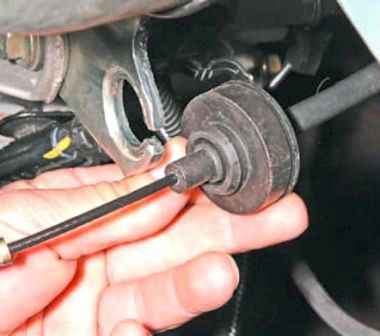
Remove the tip of the cable sheath from the bracket on the gearbox
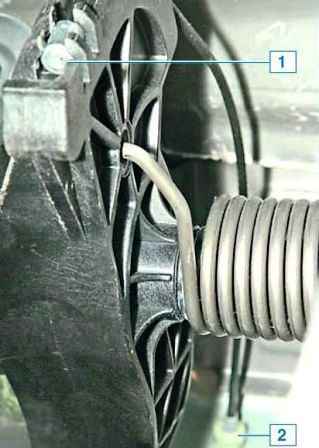
In the car, under the dashboard, pull the cable towards you, remove the rear tip of the cable 1 from the pedal holder and squeeze the two petals of the rear tip 2 of the cable sheath, push the tip out of the front panel into the engine compartment
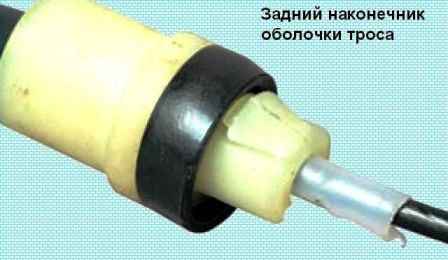
Rear cable lug tabs (shown with cable removed)
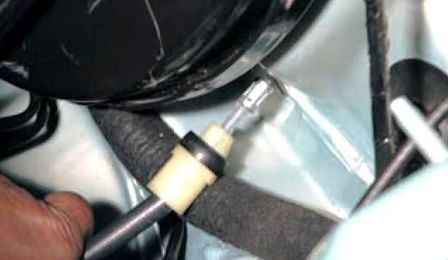
We take out the cable into the engine compartment through the hole in the bulkhead.
Install the cable in the reverse order and adjust the clutch release drive.
Clutch cable adjustment
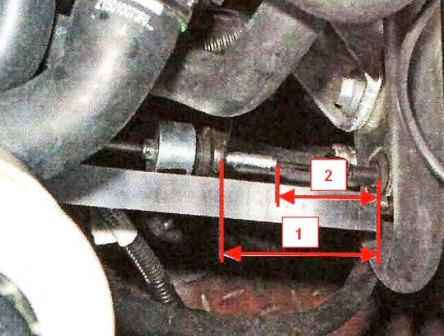
With new clutch elements, size 1, between the bracket on the gearbox and the clutch release fork, should be 85 ± 5 mm, and size 2, between the bracket and the crimped part of the threaded cable end, which should be 60 ± 5 mm
In this case, the clutch pedal is located at a distance of 105-110 mm from the floor - approximately on the same level as the brake pedal.
During the operation of the car, the clutch discs wear out, while the dimensions 1 and 2 increase, and the pedal travel increases.
The pedal is higher than the floor and the clutch starts to engage at the end of the pedal stroke.
Therefore, during operation, every 15 thousand kilometers, a check and, if necessary, adjustment of the clutch release drive should be carried out.
Before adjusting with a metal brush, clean the threaded tip of the clutch cable from dirt and corrosion.

To adjust with the clutch pedal released, use a 10 key to unscrew the adjusting nut, holding the tip of the cable by the hexagon with a 6 key, achieving the above size 2.
Size 1 is not adjustable in operation.
Having pressed the clutch pedal several times, we check the distance again.
For an adjusted clutch, the fork travel should be 28-35 mm.
In this case, the reverse gear should be engaged with the engine running without crackling.
If necessary, repeat the adjustment.





